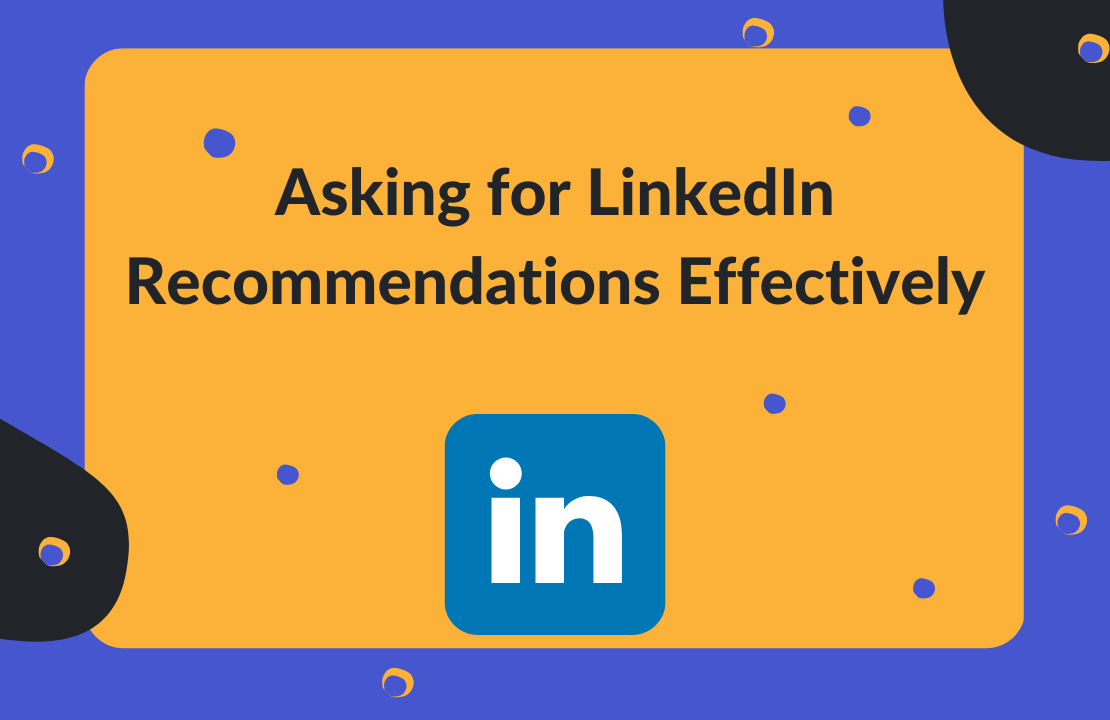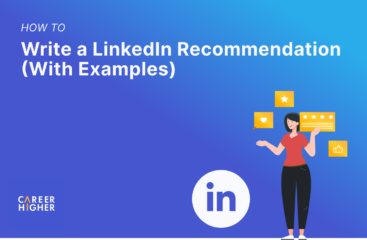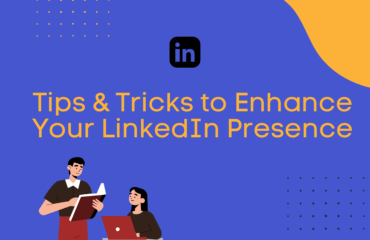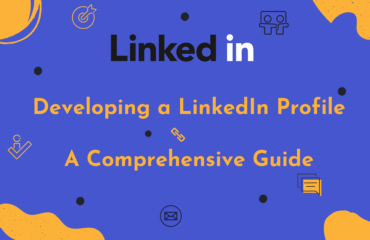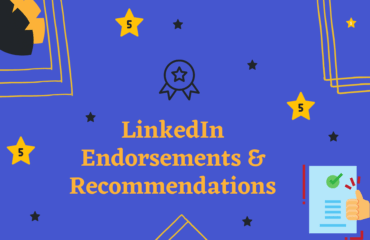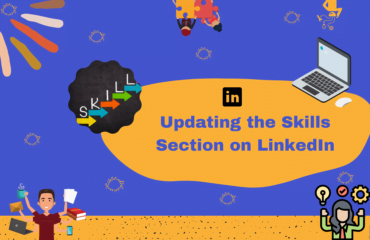Table of Contents
LinkedIn is now one of the most preferred hiring tools, used by over 87% of recruiters. So, it is no surprise that creating a great LinkedIn profile for yourself can form an integral part of your job search process. While optimizing your profile generally only involves your own time and effort, there’s one section that requires some help from others – recommendations.
LinkedIn recommendations are custom messages or “work reviews/opinions” that other LinkedIn members can leave on your profile. These recommendations are visible to all LinkedIn users and show them that your skills are “vouched for”. It acts as a validation of the skills and achievements you’ve mentioned on your profile.
Why LinkedIn Recommendations are Important
Recommendations on LinkedIn provide recruiters with the necessary “social proof” that you are indeed skilled at what you do. They also play a key role in your LinkedIn networking efforts by adding a sense of credibility to your profile. However, since this process involves external factors and is one of the most critical sections of your profile, you would want to go about it the right way. Now you’re probably thinking about ‘when’, ‘whom’, and ‘how’ to ask for recommendations. Let’s answer these questions for you.
When to Ask for a Recommendation
If you’re reading this, you’re probably considering getting a recommendation. And that’s the perfect time to request recommendations. If you’re looking for a new job right now, recommendations add value to your application and show your capabilities to recruiters.
On the other hand, if you aren’t actively looking for opportunities, it’s still great to collect recommendations as they remain on your profile for as long as you’d like. There are, however, a few key phases in your career where asking for a recommendation would either be easier or more crucial. Here are a few to note:
a) When you complete a gig or leave a job: Since the project (or your time on the job) has come to a close, you and the person making the recommendation have a clear understanding of your capabilities and the results you have achieved. This makes it easier to quantify your skills in a recommendation.
b) When you’re looking for a new job: When a recruiter goes through scores of profiles, recommendations will act as an additional point in your bucket against other candidates. Recommendations go beyond your resume and show recruiters that you have indeed added value to others you’ve worked with
c) When your manager leaves the company: Your manager has been mentoring you and observing your work up close. They are also in a respected position. This means that a recommendation from a previous manager carries more value and credibility. Since your manager is moving on from the company, you could request a recommendation as part of your farewell note.
d) When you see great success with a client: Working on client projects can always be tricky. But when you execute a project successfully, you have a happy client who’s more likely to share a recommendation. They also have a fair idea of your most valuable skills
Whom to Ask for a Recommendation
When selecting people to ask for recommendations, remember not to put all your eggs in one basket. You want potential employers to receive a well-rounded view of your capabilities. We suggest a healthy mix of recommendations from people that worked with you in various capacities.
You would want to choose people who have worked with you long enough to provide more detailed and precise recommendations. They ought to have worked closely enough to understand your work ethic, best assets, passion, and the quality of your work. Reach out to a mix of:
a) Managers or seniors: Seniors who have worked with you at your current or previous job can bring in an authoritative and trustworthy recommendation.
b) Colleagues: Immediate team members or colleagues from cross-functional teams provide a perspective on your ability to work as a team player.
c) Clients: Your previous clients provide a look into your ability to manage, lead and execute projects based on requirements.
Once you’ve made a list of people you want to reach out to, head back to LinkedIn and check if you are connected to them. If not, reach out to them via your usual mode of communication first, before connecting with them on LinkedIn.
How to Ask For a LinkedIn Recommendation
1) Narrow Your List of Relevant Connections To Your Needs
Even though every recommendation adds value to your profile, working on multiple avenues may not be the best approach. If you’re in a time crunch, you may want to focus on maximizing the possible acceptance rate and ensuring you’ve collected impactful recommendations. Among the list you’ve prepared, pick out the people who are most likely to provide you with a recommendation. When you ask for a recommendation, you’re asking the person to vouch for you in a public forum, which weighs against their own standing. You’re also asking them to take time out of their schedule to assist you in furthering your goals.
You’d want to pick those who are most likely to invest some time in you, those who have previously expressed appreciation for your work, or whose job was made easier by your contribution. Additionally, you’d want to ensure that you don’t receive a large influx of recommendations over a short period. Since the date appears alongside the recommendation, too many at a time could lead recruiters to reconsider their legitimacy.
2) Start with a Polite Conversation
It is important to be cognizant of the fact that you are asking for a favor from your colleagues or managers. So instead of skipping right to the request, begin with a polite conversation. If you’re asking for a recommendation from a current colleague or someone you meet frequently, the best way is to talk to them in person. Start with a casual conversation, then bring up the fact that you’re hoping to spruce up your LinkedIn profile and segway into asking for a recommendation.
On the other hand, if you don’t meet often, head to the platform you use to communicate (LinkedIn, email, etc.) with them and simply drop a “Hello”. Start off with a casual greeting and move into small talk. Check in with them, ask them how they are doing, talk about common interests or even ask them about their work day (if it’s a current colleague or a manager). After some conversation, let the person know that you are reaching out to them to see if they’d be open to providing you with a LinkedIn recommendation.
3) Structure your Request
The structure of your request could largely vary based on the person you are speaking to. But, all requests must cover a few critical ideas to ensure you receive the most impressive recommendations. Here are some tips:
- Start by expressing your appreciation for the person, their input, and for the work you’ve done together. This would show that you respect and remember them and would also serve as a means to jog their memory of the work you carried out.
- Next, inform the person that you are in the process of updating or optimizing your LinkedIn profile and are looking for recommendations for the same. You could also speak to why you think their contribution is critical to you. It would show that you value their opinion.
- If not previously addressed, add in a few words that briefly touch upon a specific project you collaborated on and highlight your contributions and skills used within the task.
4) Exchange recommendations
This step is optional. However, offering to send in a recommendation could work great, especially when it comes to colleagues. A colleague or team member is likely to be at a similar stage in their career as you and therefore may need recommendations too. Let them know that you would be happy to provide them with a glowing LinkedIn recommendation as well. You could also say that your recommendation is an open offer and that you’d send it across irrespective.
The gesture of offering a LinkedIn recommendation alone builds a sense of trust and obligation. When offering to write a recommendation for them, ensure you shine a spotlight on your views (positive) of their work. Here too, you’d want to be specific and focus on measurable and observable contributions during your time together.
5) Make sure they do not feel pressured
Writing a recommendation is an investment of time and a risk to the person’s credibility. Any sense of pressure or coercion could contribute negatively to their consideration of your request. You’d want to make sure that the person feels comfortable with the idea and you can do so by providing them with an ‘out’. Ensure that you let the person know that their contribution is not compulsory and that you’re merely putting forward a request. Express that you are cognizant of the time and thought involved and that you would understand if they couldn’t help you out with the same.
And finally, sign off on a personal note. You could go with an informal end that reflects the closeness of your connection, such as, “See you soon” or “Hope to catch up soon”. If your relationship is primarily formal, you could go with “best regards”, “kind regards” or “best wishes”. To get a better understanding of which pointers work best, based on the scenario, take a look at the LinkedIn recommendation request templates below.
LinkedIn Recommendation Request Example Messages
Example 1: Request a recommendation from a former manager
Hello <first name>
Hope you are doing well. I was looking back on some of the work I’ve done and I must say, our work together on <project> was some of the best. The project and your guidance, helped me pick up all the right skills.
I am currently in the process of updating my LinkedIn profile <for optional reason>. I wanted to check if you would be open to writing me a recommendation that speaks to the work we’ve done together. Your mentorship enabled me to improve on skills such as <skills, skills, skills> that still continue to serve me well.
I gather that you are rather busy and would completely understand if you weren’t able to do this.
That said, your recommendation would be greatly appreciated.
Warm Regards,
<Name in full>
Example 2: Request a Recommendation from your Client
Hello <full name or Sir/Madam>
It has been great working on <project>. Since our project is just about done and we’re seeing some great results, I was hoping you’d consider writing me a recommendation on LinkedIn.
The project allowed me the opportunity to work on <skills and technology> and have autonomy on the strategy as well. It is also great knowing that we were able to achieve the results well within our timelines, allowing you to move forward with your work.
If you are open to writing this recommendation, I can send you a template to help speed things up. On the other hand, if you’re not comfortable with the idea, please ignore the request. I completely understand that you may not have the time for this.
Hope to hear back from you on this.
Warm Regards,
<Name in full>
Example 3: Request a recommendation from a colleague
Hello <first name>
I really enjoyed working with you on <project>. I felt that our work styles matched up and made the process much easier.
Given that we’ve been able to produce some great results together, I was wondering if you’d be open to sending me a LinkedIn recommendation highlighting my skills in <areas of expertise>.
If you’re busy, I’d be happy to send you a rough draft that you can edit before sharing. I’d also love to send across a recommendation for you as well. Apart from your impeccable skills with <skills, and skills>, if there’s anything you’d like me to put in, do let me know 🙂
Also, just wanted to add that this is totally optional and I’d understand if you’d say no.
I will still be sending a recommendation for you irrespective.
See you soon.
Whether you choose a modified version of our templates or a custom message of your own, you’d want to head to LinkedIn to make the request once you’re done crafting your message. The platform allows you to request recommendations either from your profile or from the profile of the person who’s writing the recommendation. Here’s a guide on how you make a formal request via the platform itself.
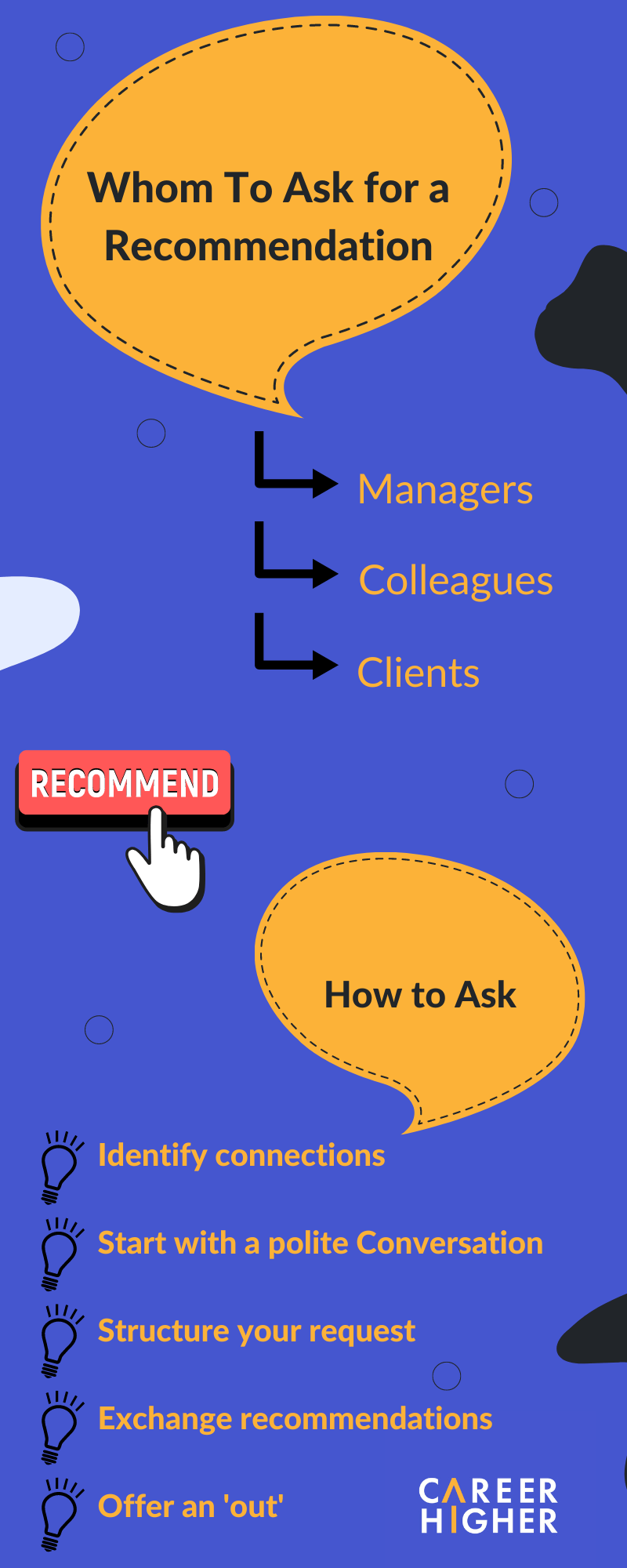
When you receive a recommendation, you will be notified by LinkedIn. Once the recommendation comes in, you could request a revision if needed. We don’t recommend deleting or rejecting any incoming recommendation. Instead, you can manage your recommendations by choosing which ones to show on your profile based on relevance. Remember, you’ll need to update your profile each time, based on your target job.
After you’re done with the initial process and while you wait on your recommendations, you can shift your focus to working on other parts of your LinkedIn profile. If you need additional help to ensure your profile is optimized for hiring, you can reach out to one of our career experts.
